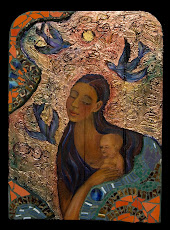Have you ever stood in front of a color rack at a paint store, starring at hundreds of color samples and felt confused? It can get even worse if you go in thinking that you might remember something about color from a long-ago art class, then discover that nothing makes sense. Here's how to start making sense of what you are seeing and hearing at the paint store. Starting with the right vocabulary is your first step to success.
The way color is discussed by artists or in an academic setting is different from the way color is understood in a paint store. Here are a few terms to use when describing and understanding color:
•
Color – Any hue, tint, tone or shade. In other words, any color.
•
Color Wheel – A round graphic chart showing the relationship between primary, secondary and sometimes tertiary colors. Used to explain basic color mixing, the principles do not apply directly to how paint stores mix color, as most commercial paints rely on bases to modify the colorant.
•
Colorant – The pure pigment that a paint store adds to a base to create a color.
•
Base – This is the base product a paint store begins with. It is the “paint” without any colorant added to it. The base color changes depending on the darkness or lightness and the warm or cool tone of the color being mixed. Bases are used only in the paint-store mixing process.
•
Hue – Specifically refers to a primary, secondary or tertiary color on the color wheel. Though not specifically accurate, many people use the word interchangeably with the word color.
•
Primary Colors – these are the three colors on the color wheel from which every other color is created: Red, Blue and Yellow. Do not use this term to apply to bright colors in general, as you may confuse the person in the paint store who has a more specific vocabulary. Again, paint stores do not mix a color from the primary colors, they begin with bases.
•
Complementary Colors – These are pairs of colors that are opposite from each other on the color wheel. Artists mix them together to create beautiful variations that include browns and other “neutral” colors. We’ll use this term when describing the interaction of a variety of colors in the same room. This term doesn’t mean much in a paint-store setting as colors are mixed using a pre-determined combination of a base and colorant.
•
Tint – This word has two meanings. To artists and color experts, it means any color that has white mixed into it. In a paint store, it refers to adding colorant to a base.
•
Value – The relative lightness or darkness of a color.
•
Color Temperature – The relative warmth or coolness of a color.
•
Saturation – Refers to a color that is more color than white. The darker and/or “more pure” the color is, the more saturated it is.
See paint colors for interiors on the
Project Portfolio page of my website.
All writing and images on this blog are copyright protected by Cristina Acosta
 Here’s a few tips to get you started and then keep you connected to your palette within:
Here’s a few tips to get you started and then keep you connected to your palette within: 
























